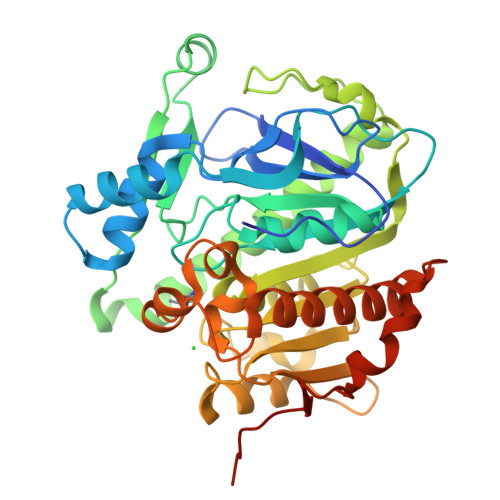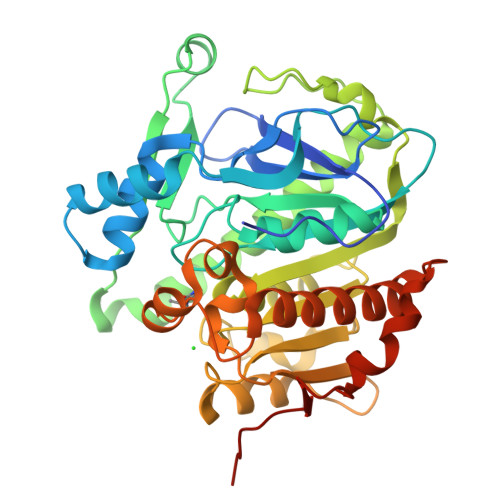Exploitation of a Novel Binding Pocket in Human Lipoprotein-Associated Phospholipase A2 (Lp-PLA2) Discovered through X-ray Fragment Screening.
Woolford, A.J., Pero, J.E., Aravapalli, S., Berdini, V., Coyle, J.E., Day, P.J., Dodson, A.M., Grondin, P., Holding, F.P., Lee, L.Y., Li, P., Manas, E.S., Marino, J., Martin, A.C., McCleland, B.W., McMenamin, R.L., Murray, C.W., Neipp, C.E., Page, L.W., Patel, V.K., Potvain, F., Rich, S., Rivero, R.A., Smith, K., Somers, D.O., Trottet, L., Velagaleti, R., Williams, G., Xie, R.(2016) J Med Chem 59: 5356-5367
- PubMed: 27167608
- DOI: https://doi.org/10.1021/acs.jmedchem.6b00212
- Primary Citation of Related Structures:
5JAD, 5JAH, 5JAL, 5JAN, 5JAO, 5JAP, 5JAR, 5JAS, 5JAT, 5JAU - PubMed Abstract:
Elevated levels of human lipoprotein-associated phospholipase A2 (Lp-PLA2) are associated with cardiovascular disease and dementia. A fragment screen was conducted against Lp-PLA2 in order to identify novel inhibitors. Multiple fragment hits were observed in different regions of the active site, including some hits that bound in a pocket created by movement of a protein side chain (approximately 13 Å from the catalytic residue Ser273). Using structure guided design, we optimized a fragment that bound in this pocket to generate a novel low nanomolar chemotype, which did not interact with the catalytic residues.
Organizational Affiliation:
Astex Pharmaceuticals , 436 Cambridge Science Park, Milton Road, Cambridge CB4 0QA, United Kingdom.




















